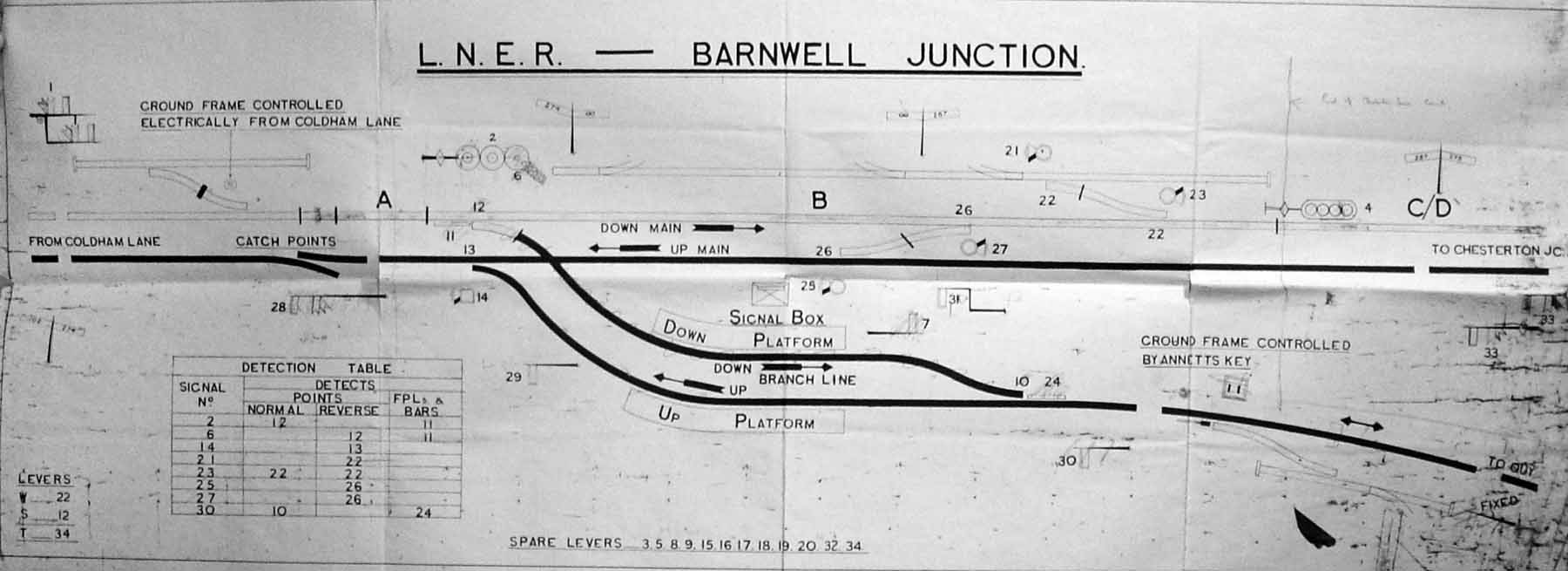
[Source: Darren Kitson]  Colour-light signals have been around on Britain's railways for over a century and the first electric colour-light signals were installed on the Liverpool Overhead Railway in 1921. In the 1930s the LNER installed a large number of such signals in their southern area; some of these were in the Barnwell Junction area and can be seen on the signal box diagram above. Most LNER colour-light signals were of the 'searchlight' type; a single lamp, a single clear lens and a rotating disc containing coloured lens. The Barnwell Junction diagram probably dates from c1930 to 1935. It is no later than 1935 because Quy signal box, marked at bottom right of the diagram, was abolished that year. Also at bottom right part of the spur to the Commercial Brewery can be seen. The up and down main lines and up and down branch platforms are clearly marked as is the signal box itself behind the down branch platform. Note the odd mix of text styles; block capitals and capitalised lower case. The branch platforms are marked as Up and Down, this being the correct style in the railway context. The goods yard can be seen towards the top of the diagram and it was the practice to portray sidings in outline and running lines in solid black as above. At top left is the mysterious siding with its ground frame electrically controlled from Coldham Lane Junction. The little chart at bottom left gives the number of signal box levers; Working - 22, Spare -12, Total 34. Which particular levers were spare is noted at bottom centre of the diagram. The Detection Table relates to point-signal interlocking and in accordance to how the relevant points are set. The 'FPL' abbreviation means 'Facing Point Locks', more usually referred to today as 'Point Locking Bars'. Note the catch points on the up main line. Their purpose was to protect the branch and the up main north of the junction from runaways on the gradient indicated by the gradient symbol at the left of the diagram. For the final few years existence of the Mildenhall branch these catch points were removed and replaced by a set on the Up branch immediately prior to the junction. Diagram received from Richard Pike
|

 Home Page
Home Page